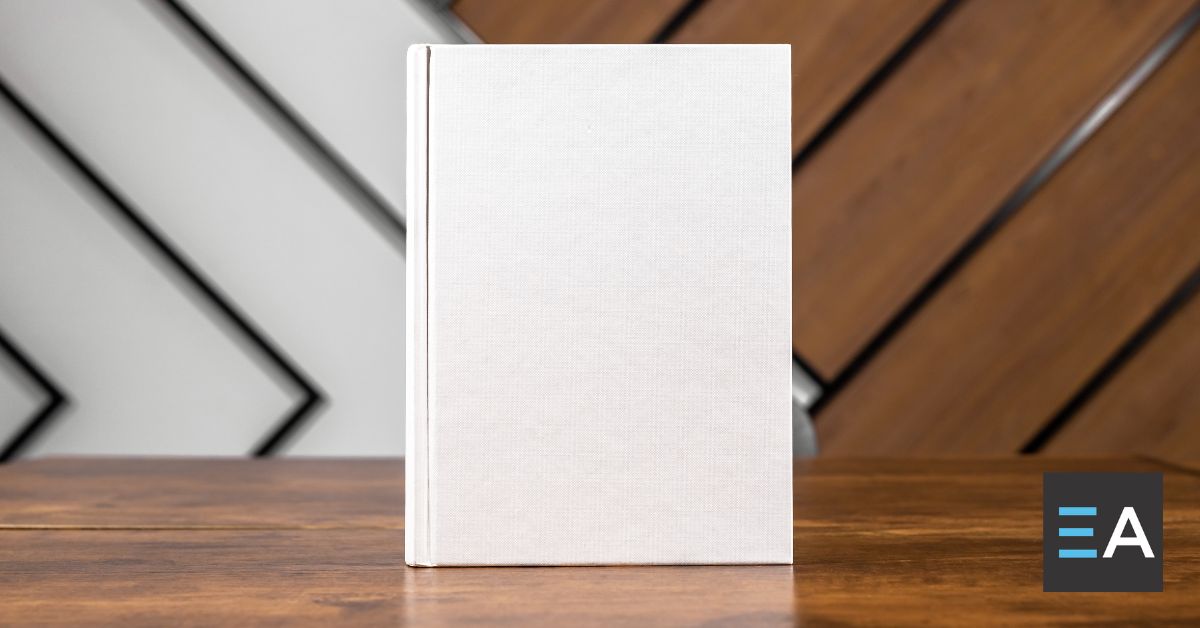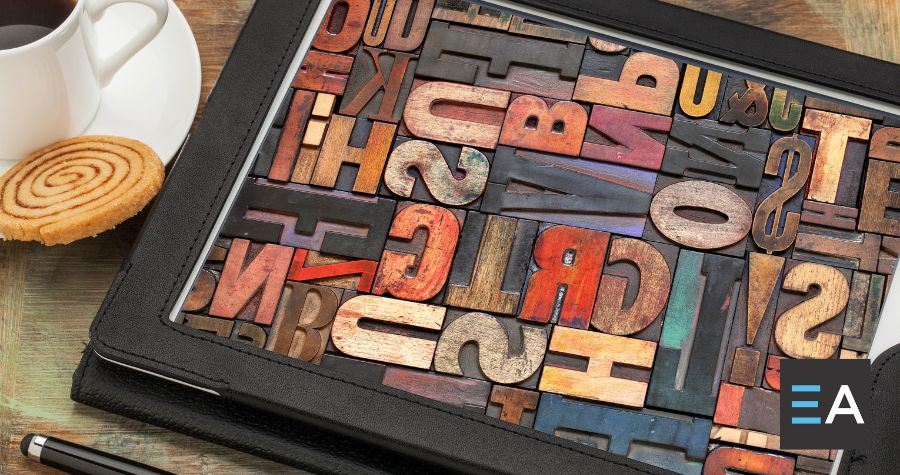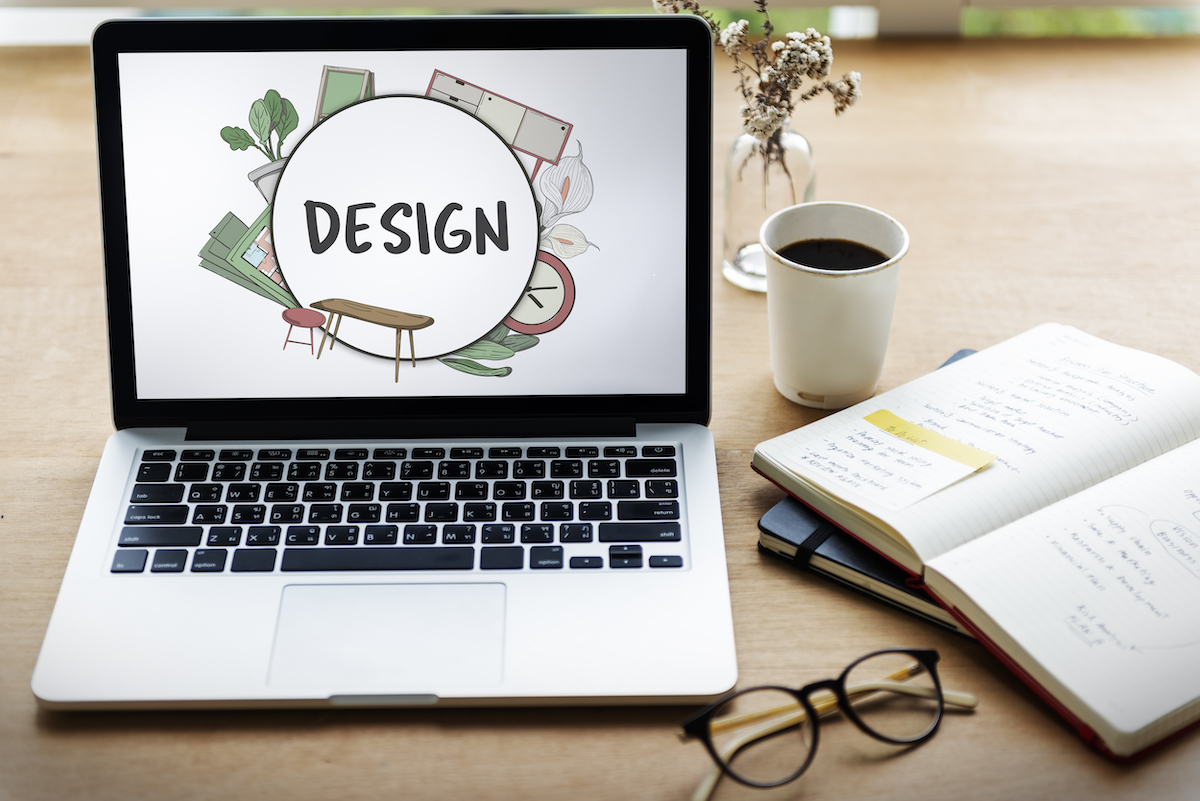
Cover Design Trends for Self-Published Authors in 2023
September 28, 2023
Using Color Psychology in Book Cover Design to Attract Readers
October 2, 2023Navigating Typography Choices for Your Self-Published Book
Today, we’re diving into the wonderful world of typography—the art of arranging and designing type to make your written words not only easy to read but also visually appealing. When it comes to self-publishing, typography acts as your trusty guide. The decisions you make regarding fonts, spacing and layout can either make or break the readability and marketability of your book. So let’s embark on a typographic adventure that will lead you to success in sales and marketing.
Click here to get a quote on publishing services.
The impact of typography
Before we set off on this journey, it’s important to understand just how significant typography is for your self-published book. Typography goes beyond mere looks; it deeply influences how readers connect with your work. Here’s why typography is like a best friend for authors;
Readability: Making sure that your words are easily readable is crucial. By choosing the right font, you ensure that readers can comfortably absorb what you’ve written without straining their eyes.
Setting the mood: Typography helps convey the mood and personality of your book. Whether it’s a whimsical font for a children’s story or a classic serif for historical fiction, your typography choice sends its own powerful message.
Branding: Ensuring consistent typography throughout your book series or author brand is important for readers to easily recognize your work. It’s like having your own unique signature as an author.
Marketing: A well designed layout and typography can greatly enhance the marketability of your book cover and interior. A visually appealing book is more likely to catch the attention of potential readers and increase sales.
Now, let’s set sail and explore the typography choices that will make your self-published book truly stand out.
Font selection: choosing the right typeface
Fonts play a crucial role in typography. The font you choose can either be the charming protagonist or the villainous antagonist of your book. Here are some key factors to consider when selecting a font:
Readability: Above everything else, it’s essential that your chosen font is easy to read. Avoid overly elaborate or condensed fonts that strain the eyes.
Genre compatibility: Take into account the genre of your book. Serif fonts like Times New Roman evoke a sense of tradition and are often used in literary works, while sans serif fonts like Arial provide a more modern touch suited for contemporary fiction.
Character personality: Consider your characters and story. Does your main character exude classic elegance (serif) or have a cool contemporary vibe (sans serif)?The choice of font can effectively convey different character traits.
Consistency: When writing a series, it is crucial to maintain consistent font choices throughout all your books. This helps establish your brand and makes your books more recognizable.
Font size: Pay attention to the size of the font, especially for body text. It should be large enough to read comfortably without disrupting the flow of reading.
Font pairing: Sometimes, combining different fonts can create a marvelous effect. Consider pairing a legible font for body text with a stylish one for chapter titles or headings. Just make sure they complement each other well.
Spacing and leading: achieving the right balance
Spacing is often underestimated in typography, but it plays a significant role. It’s not just about the gaps between words and letters; it’s about creating rhythm and flow in your text. Here are some tips to strike that perfect balance:
Kerning: Kerning involves adjusting the spacing between individual characters. Avoid cramped letters that collide with each other or overly spaced ones that drift apart too much. Aim for even and visually pleasing spacing.
Leading: Leading refers to the space between lines of text. Too little leading can result in a cluttered mess, while excessive leading makes it feel disjointed. The right amount of leading ensures a comfortable reading experience.
Margins: Sufficient margins provide breathing space for your text, preventing it from feeling overcrowded. They also enhance the visual appeal of the book.
Text alignment: center, left, or justified?
The way your text is aligned can have a significant impact on the reading experience. Each option has its own advantages:
Left aligned: This is the standard choice for most books. It offers a clean and familiar reading experience.
Center aligned: Often used in poetry, children’s books, or books with short passages. It can create a more artistic and visually engaging layout.
Justified: This alignment ensures that the text lines up neatly on both the left and right sides. While it may look polished, it can sometimes result in awkward spacing between words, so it should be used with caution.
Typography for ebooks: digital considerations
In today’s digital era, many readers access books through ereaders and tablets. Ensuring that your typography appears well on screens is crucial for sales and marketing success. Here are some factors to consider:
Font licensing: Make sure that you have legally licensed fonts for ebooks, as some fonts may not be compatible with ereader devices.
Text reflow: Different devices and font sizes can affect how your text flows. Test your ebook on various devices to ensure a consistent reading experience.
Font size and adjustability: Make sure the font you choose remains easy to read when readers change the text size. It’s helpful to use scalable fonts in this case.
Keep things simple: Avoid using too many different font styles or complicated formatting. Stick to a straightforward layout that is easy for readers to follow.
Typography for your book cover: creating a memorable first impression
Your book cover is the first thing people see and typography plays a crucial role in making it impactful. Here are some tips for choosing typography for your book cover:
Clear title: Your book title should be easily readable, even when displayed as a small thumbnail image. Stay away from overly decorative fonts that might make it difficult to decipher.
Consistency: The fonts used on your cover should match the typography inside your book, creating a cohesive brand and enhancing recognition.
Hierarchy: Utilize typography to establish an information hierarchy on your cover. The title should take center stage, followed by the author’s name and any additional text.
Color considerations: Ensure that the color of your text stands out clearly against the background for optimal readability. You might need to choose different colors for digital and print versions of your cover.
When is it beneficial to hire a designer?
While making typographic decisions yourself can be empowering when self-publishing, there are instances where bringing in a professional designer can be highly beneficial.
Consider engaging the services of a designer in these circumstances:
- You don’t have much experience in design and wish to have a professionally crafted, marketable book.
- You feel uncertain about making font and layout decisions.
- Your book requires complex formatting.
- You desire a cover design that is both distinctive and visually captivating.
A skilled designer can transform your vision into reality, ensuring that your book not only looks exceptional but also stands out from the competition in the market.
Navigating your journey with typography
In the intricate world of self-publishing, typography serves as your trusted companion. The choices you make regarding fonts, spacing, alignment, and cover design can either steer you toward success in sales and marketing or leave you adrift among countless unread books.
Therefore, dear self-published authors, welcome typography’s power with a blend of warmth, ingenuity, and wisdom. Allow it to guide your readers on an expedition through the carefully crafted words within your work. As you voyage through the vast seas of self-publishing, may your typographic choices become the guiding stars that lead readers to discover the literary treasures you have created. If you need help with figuring out what typography choices are best for you, contact Elite Authors today.
Wishing you joyful writing and designing!



